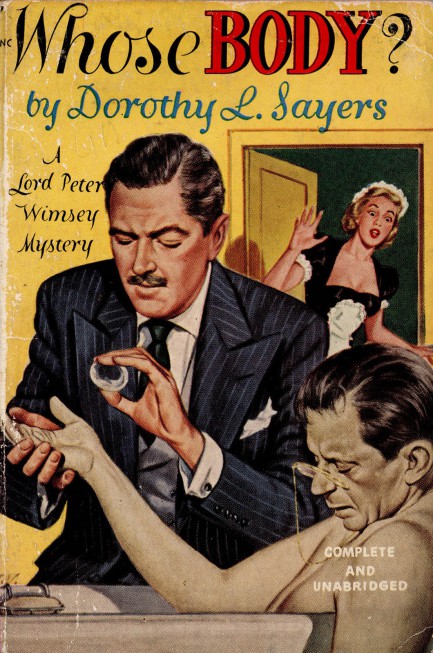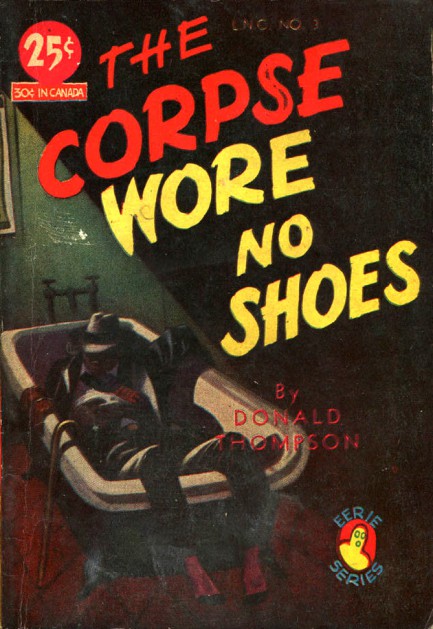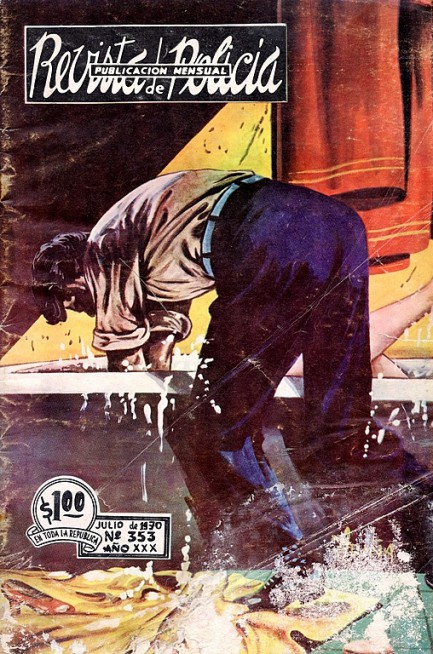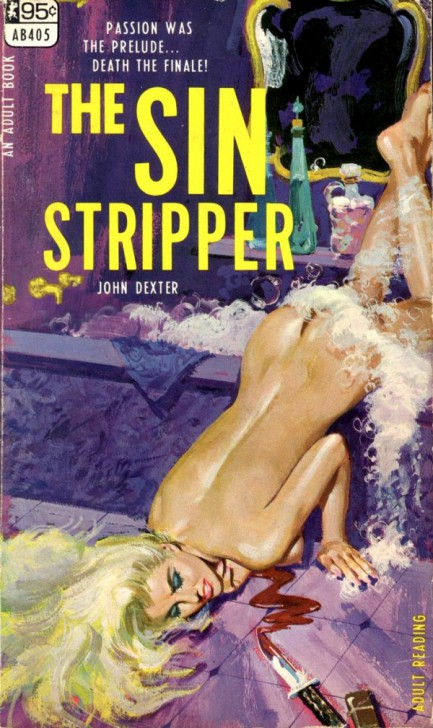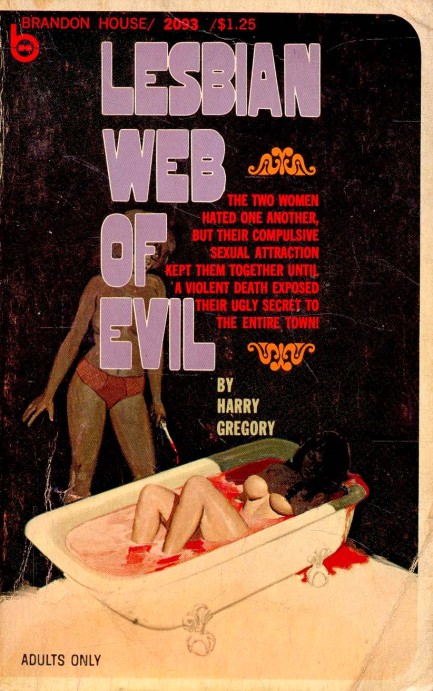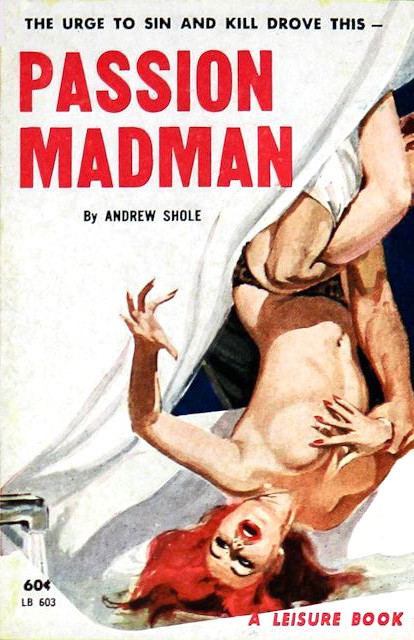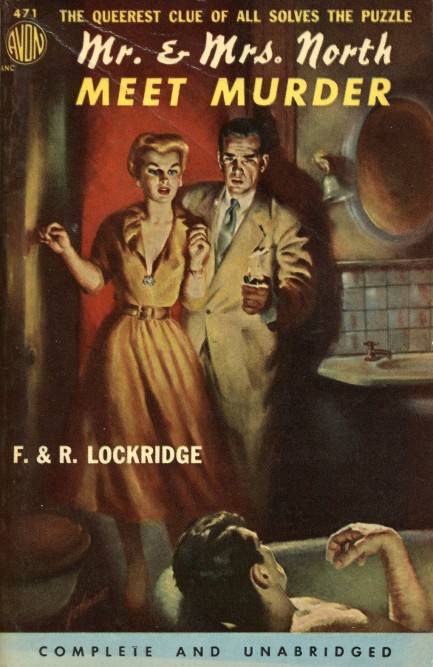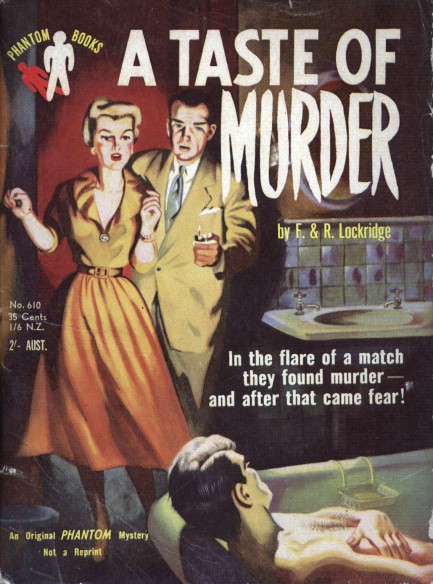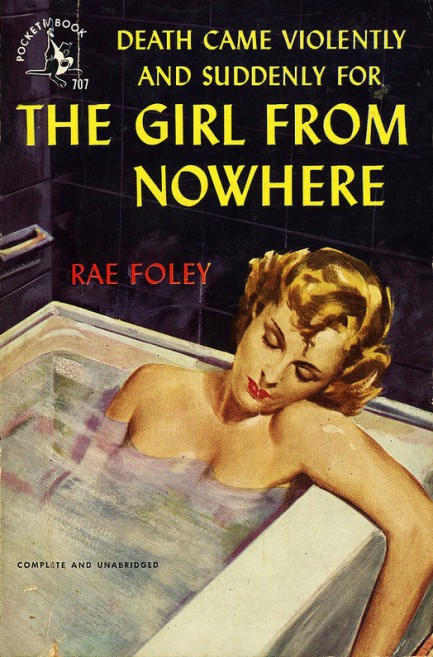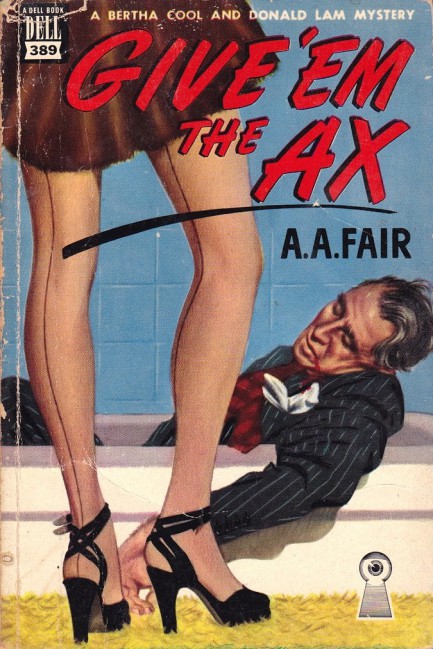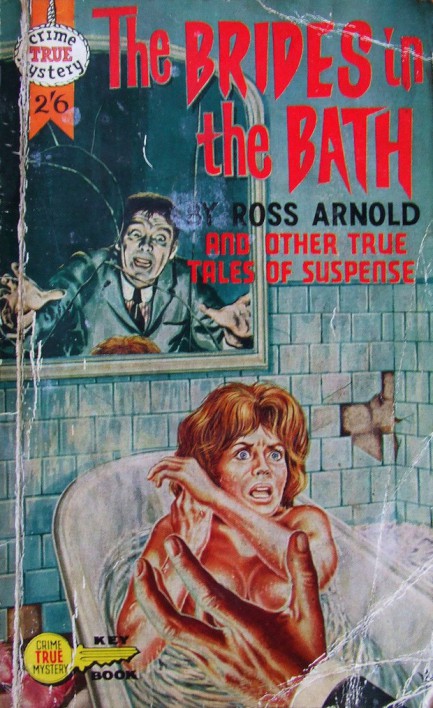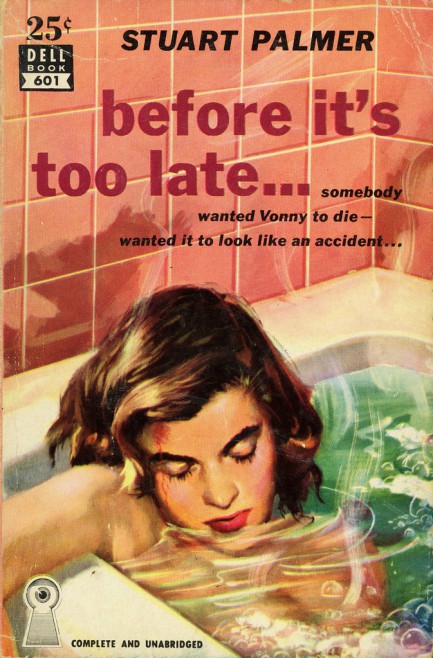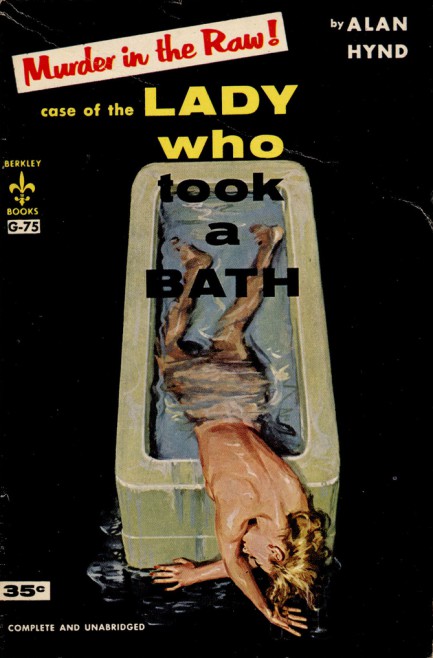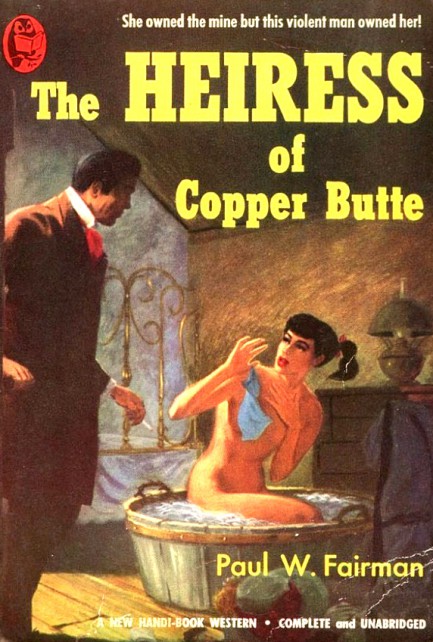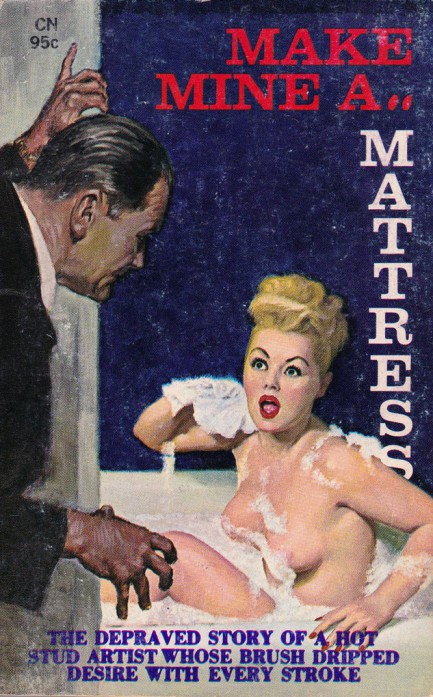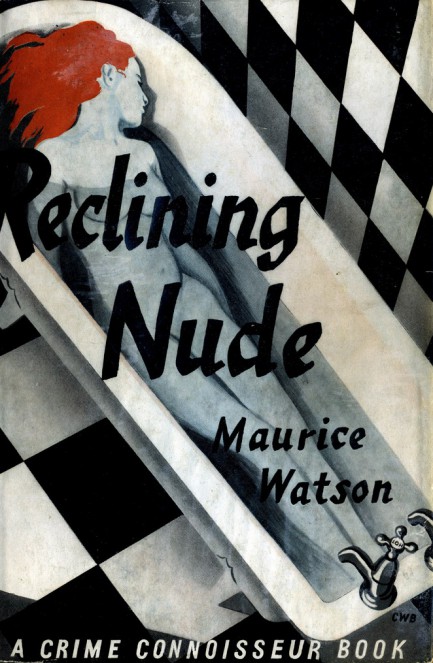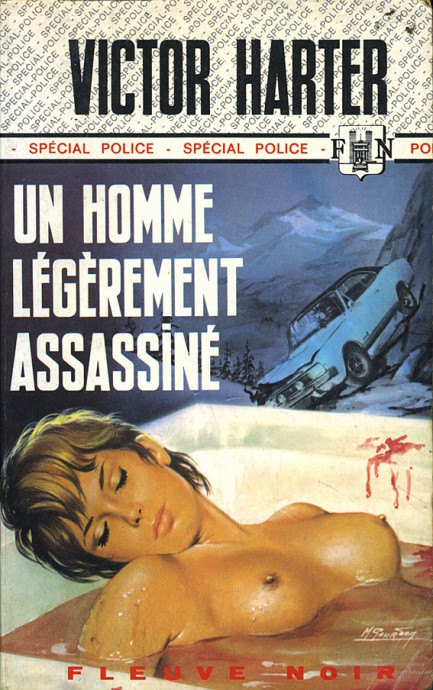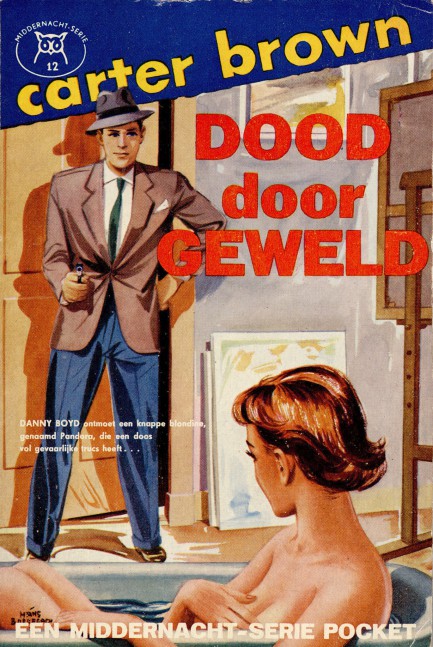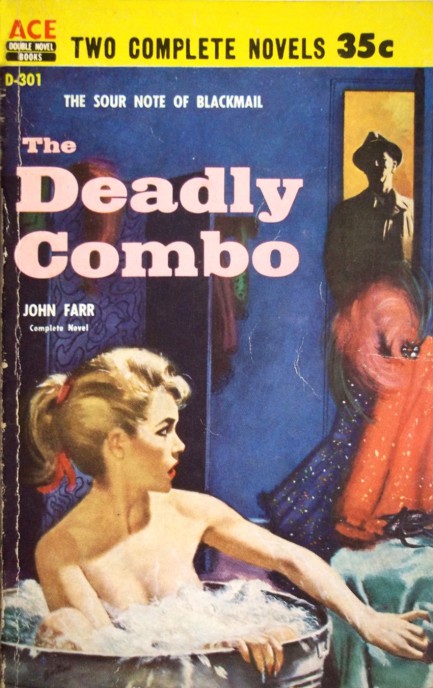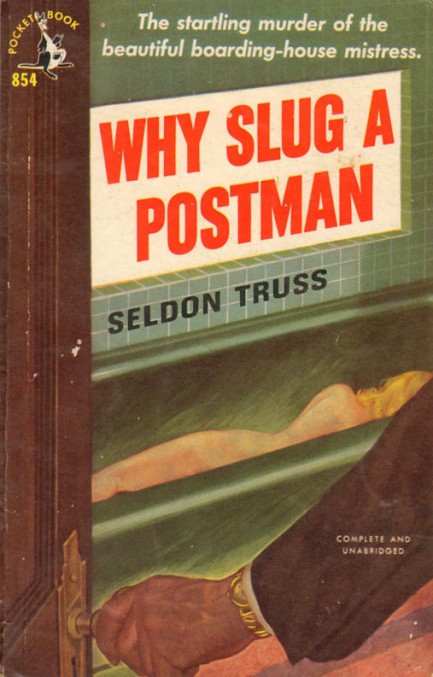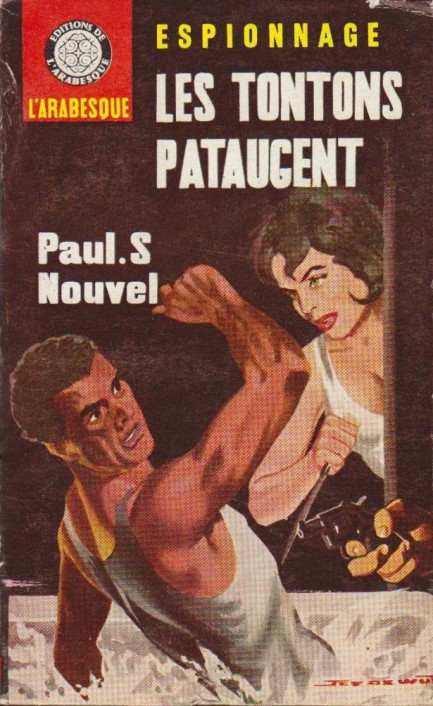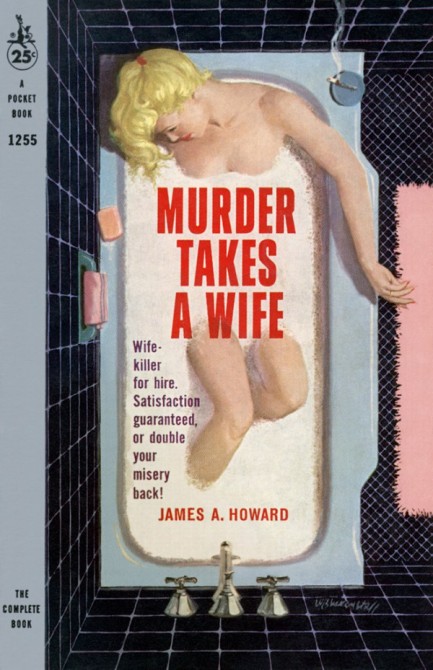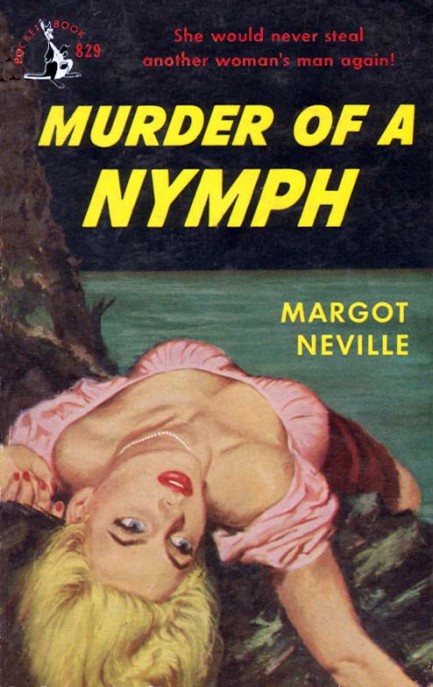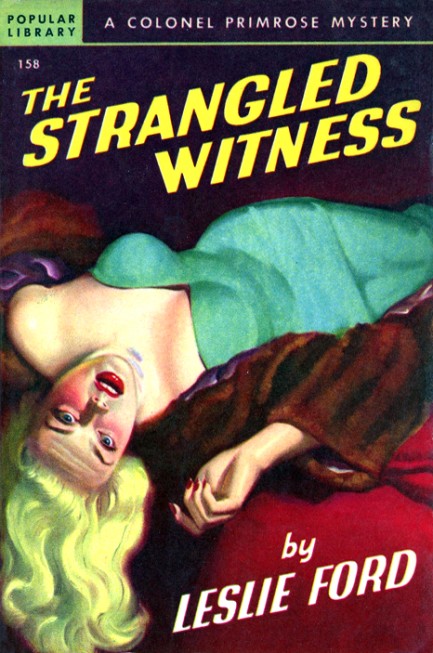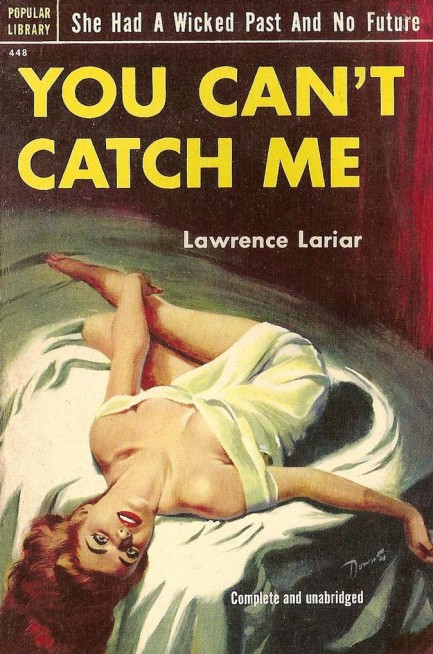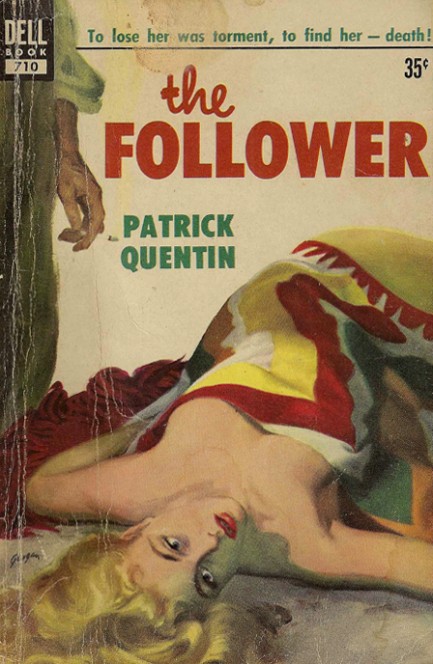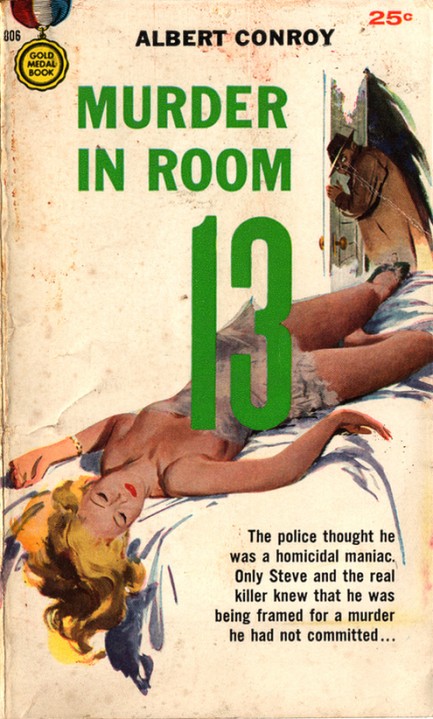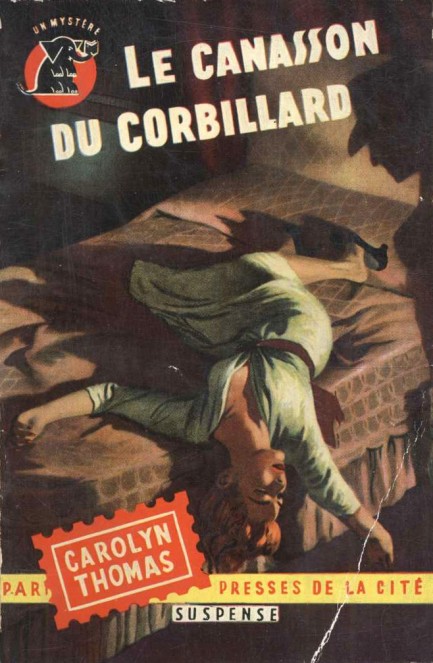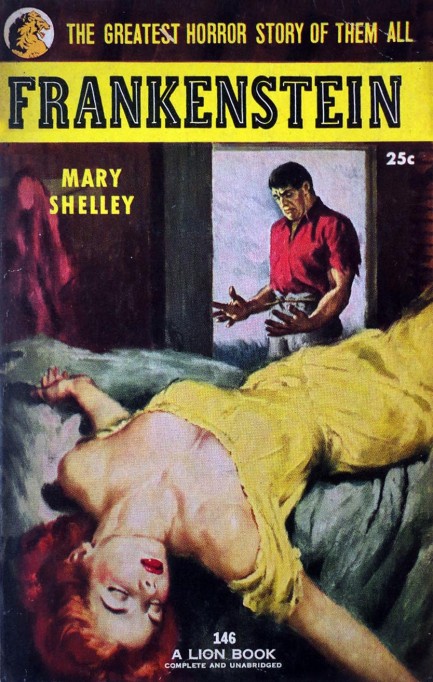 Well, girls, Mai Tai number six did Becky in. Told you she didn't have what it takes to join a sorority. 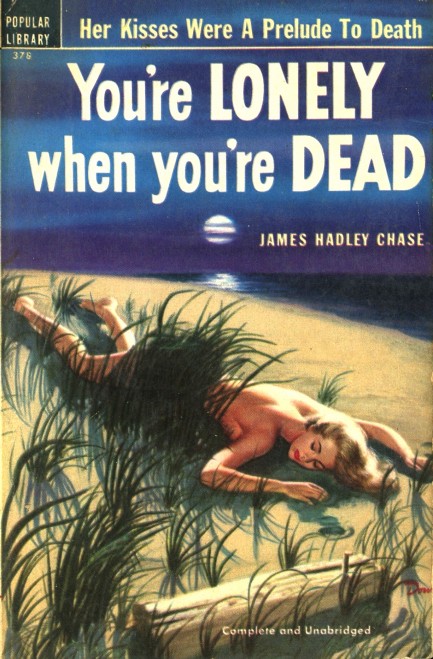
James Hadley Chase's 1939 debut novel was titled No Orchids for Miss Blandish. He later wrote a sequel with orchid in the title. And here in 1949's You're Lonely When You're Dead—for which you see a 1951 Popular Library edition with Willard Downes cover art—the action is centered around fictional Orchid City. So we guess he liked orchids. No drunk sorority girls in this one. The main character, Vic Malloy, who would star in other Orchid City capers, runs a fixer agency for rich folks, and is called in by a husband to look into the background of the woman he married after a whirlwind romance. Shady history turns up and bodies fall, starting with one of Malloy's operatives. Lonely when you're dead? Not in this book. The dead are a crowd, as characters go bye-bye in quick succession. Revenge, theft, blackmail, action, murder, and effective comic relief combine to make this a nice read. It's not quite Miss Blandish. But then how could it be?
 Nations to betray, people to murder. *yawn* Let me nap for about twelve hours before I spring into action. 
We move from yesterday's canines to today's felines. Pure pinup style art by Willard Downes adorns this Gold Medal paperback of John Flagg's, aka John Gearon's, novel The Persian Cat. Looking at this, we were pretty sure Downes painted it long before Gold Medal came knocking at his studio door, simply because this piece, while wonderful, is also generic enough to front probably a quarter of mid-century thrillers. A read through the tale seems to confirm our suspicion. The main character is ex-OSS agent Gil Denby, who money lures back into the spy game for a high stakes mission in Teheran, where he's supposed to bring to justice a femme fatale who was a Vichy traitor during World War II. The femme does plenty, but she never quite gets around to lounging abed in her undies.
This was published in 1950, a crucial period in Iranian history. Though the narrative doesn't reveal an exact time frame, it's a given that the tale and publication date are closely aligned. That means the story takes place when Iran was ruled by Mohammed Reza Pahlavi, aka the Shah, with some power also apportioned to a series of prime ministers. In fact, there were seventeen prime ministers from 1940 to 1950, which hints at the political volatility of the country. Iranians would eventually elect the reformist Mohammed Mossadegh as PM in 1951, and the U.S. and Britain would promptly overthrow him in 1953, leading to the Shah gaining unchallenged power.
You will learn none of this reading The Persian Cat. It isn't even there as deep background. Also missing is any affinity for language, culture, geography, architecture, or life in the streets. Nor does Flagg mention that the predominant language in Iran is Farsi, not Arabic, and he only hints that the predominant ethnic group is Persian, not Arab. In short, the book lacks a sense of place. When reading about the exotic and distant city of Teheran, this is a letdown. Flagg traveled the Middle East but could have written this novel without ever leaving the U.S. We can't say why the Iranian flavor is so weak, but lack of interest and/or lack of willingness to have learned usable details of the country are leading possibilities. See: David Dodge for how to write exotic locales successfully.
That said, The Persian Cat is a reasonably fun, well-written adventure. Yes, we know that assessment seems contradictory. We'd have liked a more atmospheric and informative tale, but Flagg has talent. His hero Denby deals with betrayal, murder, hairsbreadth escapes, and serious doubts about whether he wants to send that languorously stretching femme fatale to her death. The book's biggest flaw—besides the usual behavior toward women that might easily earn Denby a restraining order or prison time today—is a climax built on revelatory dialogue, pages of it, that will leave you screaming in your head, “Enough talk! Just shoot the fucker!” Still, Flagg overcomes these issues to craft nine tenths of a good book. We'll probably try him again down the line.
|
 |

The headlines that mattered yesteryear.
2003—Hope Dies
Film legend Bob Hope dies of pneumonia two months after celebrating his 100th birthday. 1945—Churchill Given the Sack
In spite of admiring Winston Churchill as a great wartime leader, Britons elect
Clement Attlee the nation's new prime minister in a sweeping victory for the Labour Party over the Conservatives. 1952—Evita Peron Dies
Eva Duarte de Peron, aka Evita, wife of the president of the Argentine Republic, dies from cancer at age 33. Evita had brought the working classes into a position of political power never witnessed before, but was hated by the nation's powerful military class. She is lain to rest in Milan, Italy in a secret grave under a nun's name, but is eventually returned to Argentina for reburial beside her husband in 1974. 1943—Mussolini Calls It Quits
Italian dictator Benito Mussolini steps down as head of the armed forces and the government. It soon becomes clear that Il Duce did not relinquish power voluntarily, but was forced to resign after former Fascist colleagues turned against him. He is later installed by Germany as leader of the Italian Social Republic in the north of the country, but is killed by partisans in 1945.
|

|
|

It's easy. We have an uploader that makes it a snap. Use it to submit your art, text, header, and subhead. Your post can be funny, serious, or anything in between, as long as it's vintage pulp. You'll get a byline and experience the fleeting pride of free authorship. We'll edit your post for typos, but the rest is up to you. Click here to give us your best shot.

|
|





